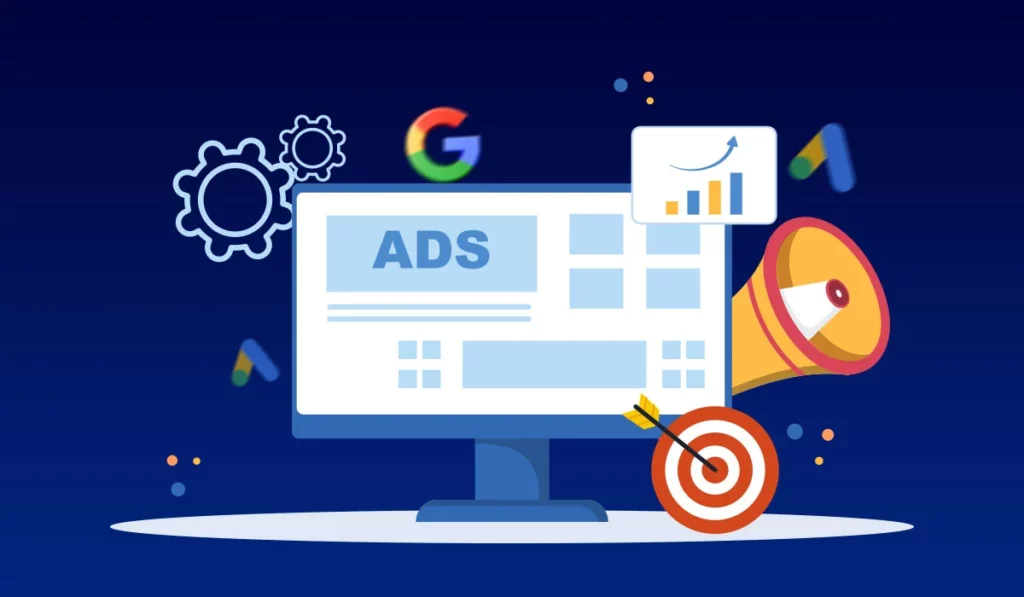How to Set Up a Successful Google Ads Campaign
Vineetha. RK12 Jul 2024
Effective advertising is not just about reaching a broad audience but it is about connecting with the right audience at the right moment.
Google Ads, Google’s powerful advertising platform, offers businesses diverse opportunities to do just that.
Understanding how to set up a successful Google Ads campaign setup can greatly boost your digital marketing efforts.
In this blog, we will discuss the essential steps to create and launch a Google Ads campaign effectively.

What’s Ahead
What is a Google Ads Campaign?
A Google Ads campaign is a powerful advertising tool that allows businesses to promote their products and services on Google’s search engine and its advertising network.
It works on a pay-per-click (PPC) basis, with advertisers bidding on keywords to have their clickable ads appear in Google search results.
Importance of Google Ads Campaign
Now, let’s try to understand why Google Ads campaigns are essential for businesses:
Increased visibility
One of the primary benefits of running a Google Ads campaign is the increased visibility it offers to businesses.
With Google Ads, businesses have the opportunity to place their ads at the top of relevant search results, making them more prominent to potential customers.
By appearing at the forefront of search engine results, businesses can capture the attention of users who are actively searching for products or services related to their offerings.
This increased visibility not only drives more traffic to the business website but also enhances brand awareness and exposure.
Targeted advertising
Google Ads provides businesses with powerful targeting options, allowing them to reach specific demographics, geographic locations, and audiences that are most likely to be interested in their products or services.
By using Google’s advanced ad targeting capabilities, businesses can make their ads appear to users based on factors such as their location, age, gender, interests, and browsing behavior.
This targeted advertising approach ensures that businesses can effectively reach potential customers who are more likely to engage with their ads.
This results in higher conversion rates and a more efficient allocation of advertising budget.
Cost-effective
Google Ads campaigns offer a cost-effective advertising solution for businesses of all sizes.
Unlike traditional advertising methods where businesses pay upfront for ad placements with uncertain outcomes, Google Ads operates on a pay-per-click (PPC) model.
This means that businesses only incur costs when users click on their ads, making it a cost-effective way to drive website traffic and generate leads.
Businesses have control over their ad budgets, allowing them to set daily or monthly spending limits.
This makes sure that they can manage their advertising expenditure within their financial constraints.
Measurable results
One of the key advantages of running Google Ads campaigns is the ability to measure and analyze the performance of advertising initiatives.
Google Ads provides comprehensive metrics and tracking tools that enable businesses to monitor the effectiveness of their campaigns in real-time.
From the number of clicks and impressions to conversion rates and return on investment (ROI), businesses can gain valuable insights into the impact of their ads.
This level of measurability allows businesses to optimize their campaign strategies, refine targeting parameters, and allocate resources to the most successful campaigns, ultimately leading to improved advertising efficiency and better outcomes.
Step-by-Step Guide to Setting Up A Google Ads Campaign
Setting up a Google Ads campaign can be difficult, but with the right guidance, it can be a straightforward and rewarding process.
1. Visit the Google Ads Website
The first step in setting up a Google Ads campaign is to visit the Google Ads website and create an account.
If you already have a Google account, you can easily sign in to access the Ads platform.
Once logged in, you can proceed to the next steps to start creating your campaign.
2. Name your Campaign and Choose its Type
After creating your account, you have to name your campaign and choose the type of campaign you want to run.
Google Ads offers various campaign types, including search campaigns (text ads that appear in search results), display campaigns (visual ads on various websites), and video campaigns (video ads on YouTube).
Select the type that matches your advertising goals.
3. Select the Location for the Ad
Next, you will need to specify the locations where you want your ads to be visible.
You can target specific countries, regions, cities, or even set a radius around your business location.
This helps you to make sure that your ads are shown to relevant audiences based on their geographic location.
4. Set the Daily Budget
One of the key advantages of Google Ads is that you have control over your budget.
Set a daily budget for your campaign to define how much you are willing to spend each day.
This allows you to manage your advertising costs effectively and avoid overspending.
5. Include Keywords
Keywords are at the core and base of Google Ads campaigns.
Choose relevant keywords that are related to your business, products, or services.
These keywords will help determine when your ads are displayed to users searching for those terms.
Conduct keyword research to identify the most relevant and effective keywords to include in your campaign.
6. Create an Ad and Set Landing Pages
With your selected keyword, now it’s the time to create your ad.
Make compelling ad copy that attracts users to click and learn more about your offering.
Additionally, you can also set up landing pages that users will be directed to when they click on your ad.
But ensure that your landing pages are optimized for conversions and provide a seamless user experience.
7. Set-up Conversion Tracking
Tracking the performance of your campaign is crucial for measuring its success.
Set up conversion tracking to monitor the actions that users take after clicking on your ads, such as making a purchase or submitting a form.
Conversion monitoring provides important information about the success of your ads, allowing you to tweak your campaign for better results.
8. Check the Review Page and Publish your Ads Campaign
Before launching your campaign, review all the settings, ad copy, keywords, and targeting options on the review page.
Double-check and verify that everything is accurate and aligned with your advertising objectives.
Once you have reviewed and finalized all the details, click on the publish button to launch your Google Ads campaign.
Conclusion
A well-executed Google Ads campaign can significantly enhance your online presence, drive targeted traffic to your website, and ultimately boost your business’s revenue.
By following the steps outlined for a successful Google Ads campaign setup, you can create targeted advertising achieving measurable results.
This strategic approach will not only increase your brand’s visibility but also ensure that your marketing efforts are reaching the most relevant audience.
Start your Google Ads campaign today and take your business to new heights!
Wish to learn more about Google ads? Check out our other blogs as well!
- Understanding Different Types of Google Ads
- How to Write Compelling Ad Copy for Google Ads
- Tracking Conversions in Google Ads
- Optimizing Your Google Ads Budget
- Common Google Ads Mistakes to Avoid
- How to Create Effective Display Ads on Google Ads
- Remarketing with Google Ads: Strategies to Win Back Customers
- Smart Bidding Strategies in Google Ads: What You Need to Know
- The Ultimate Guide to Google Ads Extensions
- Ultimate Guide to Google Ads
Latest Post

5 Do’s and Don’ts When It Comes To SEO
 18 Sep 2023
Readmore
18 Sep 2023
Readmore
Want to learn more about the digital marketing service we provide?
Contact Us to Get Started!




